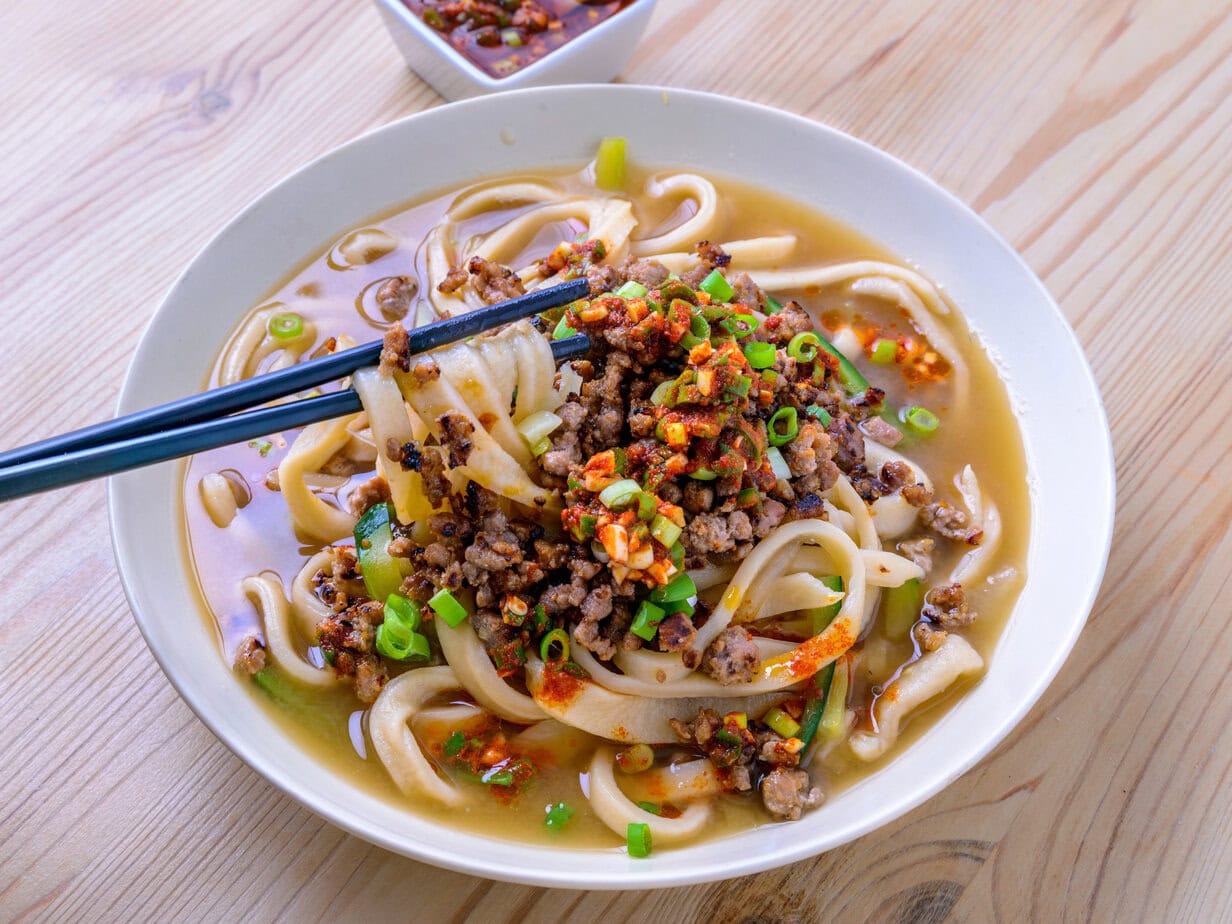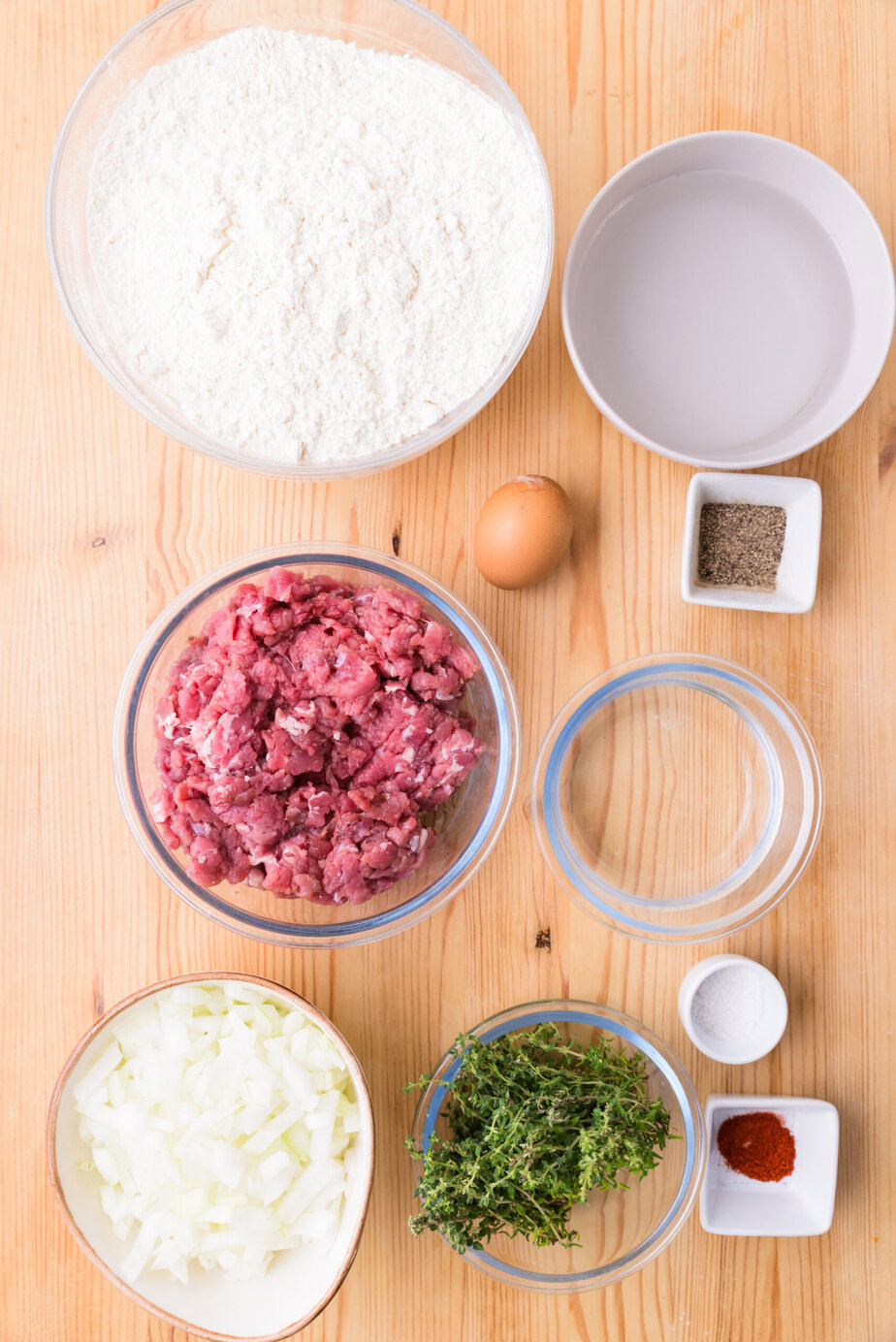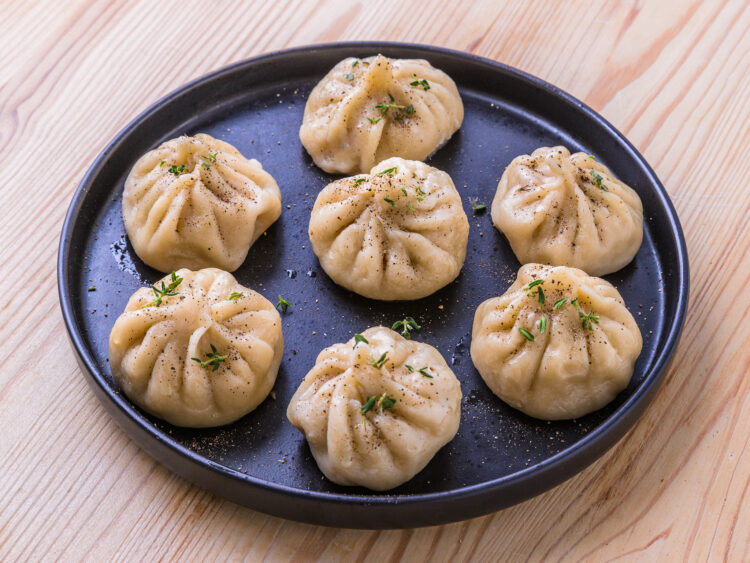De délicieux raviolis géorgiens farcis à l’agneau haché et parfumés au thym
La première bouchée n’est que vapeur et surprise. Vous soulevez la boulette par son chignon plissé. Vous mordez prudemment sur le côté et, pshhht ! Comme dans un xiao long bao, un jus brûlant envahit votre langue, ruisselant jusqu’au menton et embuant vos lunettes si vous vous penchez trop près. Une grand-mère des montagnes rirait : « Si vous n’avez pas laissé couler de jus sur votre menton, c’est que vous ne mangez pas le khinkali correctement. »
Ce qui avait commencé comme un repas pragmatique de berger dans le Haut-Caucase géorgien est devenu un emblème national d’hospitalité, incontournable de chaque festin arrosé de bière à Tbilissi et au-delà.

Né dans le Haut-Caucase : légendes & histoire
Le ravioli qui chassait le froid
Le khinkali apparaît tôt dans la littérature géorgienne : un dictionnaire du début du XVIIIe siècle, compilé par Sulkhan-Saba Orbeliani, évoque un « dumi’s shashkha », boule de pâte farcie de bouillon considérée comme l’ancêtre du khinkali, et le livre de cuisine de la princesse Barbare Jorjadze (1874) fixe l’orthographe que nous connaissons aujourd’hui. Le folklore, lui, remonte naturellement plus loin.
Une légende de Touchétie attribue l’invention à Khinda, l’épouse ingénieuse d’un khevisberi (ancien du village), qui transforma farine et mouton en boulettes pour honorer un visiteur inattendu. Une autre rattache les vingt-huit plis d’un khinkali « parfait » au cycle solaire de 28 ans, clin d’œil aux cultes solaires pré-chrétiens du Caucase.

L’histoire est moins poétique mais tout aussi vivante : les bergers de Touchétie, de Pchavi et de Khevsourétie avaient besoin d’un dîner qui puisse voyager dans une sacoche, cuire dans un chaudron de fonte et réchauffer des doigts engourdis.
La viande, l’oignon et les herbes alpines entraient crus ; l’eau bouillante de neige fondue faisait le reste, emprisonnant graisse et collagène dans un jus réparateur. Quand les marchands des plaines adoptèrent le plat au XIXe siècle, le khinkali avait déjà dépassé son berceau austère, mais n’avait pas perdu l’odeur de fumée de camp et de longs hivers.
Anatomie de l’authenticité : pâte, farce, plis
L’équivalent géorgien de la pâte à gyoza maison est volontairement robuste : seulement de la farine, de l’eau et du sel, pétris jusqu’à ce qu’elle résiste comme l’avant-bras d’un lutteur. Certaines grand-mères ajoutent un seul œuf pour plus de tenue (strictement facultatif, nullement canonique).
Abaissez les disques de façon à ce que le centre garde environ deux à trois millimètres d’épaisseur. Les bords, eux, doivent s’étirer jusqu’à devenir fins comme du parchemin ; c’est une assurance contre la déchirure lorsque le jus brûlant se déchaîne à l’intérieur.
La véritable farce montagnarde privilégie l’agneau (ou le mouton) ; selon les vallées, un peu de bœuf peut s’y glisser. On y mélange épaule grossièrement hachée, oignon, sel, poivre noir concassé et une touche de kondari (sarriette d’été, ou parfois thym sauvage).

Une louche d’eau tiède rend le mélange presque liquide ; ce liquide se métamorphosera en cette éclaboussure tant convoitée. Incorporez au moins dix-huit plis, puis torsadez fermement pour former le kudi, l’épaisse « anse » que vous saisirez ensuite. Chaque choix (épices minimalistes, viande riche en gras, pâte musculeuse) vise un seul objectif : enfermer le jus et magnifier la saveur.
Khinkali de montagne vs khinkali de ville
Lorsque le khinkali est descendu des pentes jusqu’aux tavernes de Tbilissi, la viande a suivi le marché. L’agneau a alors cédé la place à un duo porc-bœuf, moins coûteux, plus gras.
Les cuisiniers qui ne trouvaient pas de sarriette (ou de thym sauvage) se sont tournés vers le cumin ; persil et coriandre se sont glissés dans le saladier, donnant naissance au désormais omniprésent kalakuri, ou « style urbain ». Pourtant, même dans les snack-bars éclairés au néon, les fondamentaux subsistent. La farce est toujours crue, l’ail reste largement banni et les sauces voyantes demeurent tabou. Un voile de poivre noir est le seul ornement acceptable.
Demandez à un Géorgien comment repérer un imposteur et vous obtiendrez une liste rapide : viande précuite, formats apéritifs miniatures, mélanges d’épices multicolores ou (sacrilège des sacrilèges) ketchup à côté.
L’authenticité, qu’elle soit citadine ou montagnarde, repose encore sur trois piliers : une taille que l’on peut tenir dans la paume, des plis assez serrés pour emprisonner le jus, et une palette aromatique qui murmure sans jamais crier.

